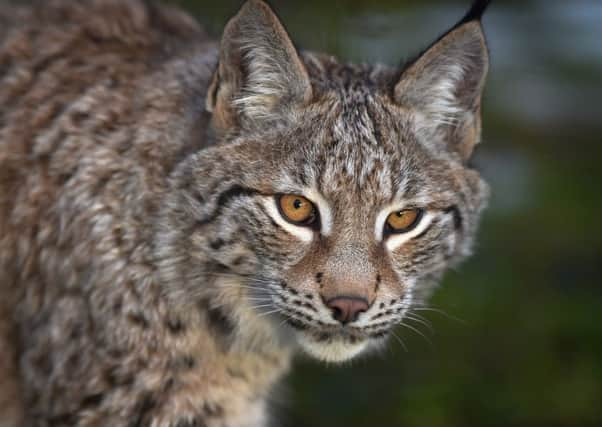Plan to bring back wild lynx to Scotland moves closer


Talks have been held to discuss the details of a proposed scheme to reintroduce the Eurasian lynx to the UK after an absence of 1,300 years.
Conservationists behind the plan hope to announce the preferred option next month, with a view to the first animals being released next year.
Advertisement
Hide AdAdvertisement
Hide AdThe location for a trial release of up to ten of the medium-sized cats, which prey mainly on deer, has not yet been finalised but a number of sites in Aberdeenshire are among the key contenders north of the Border. Kielder Forest, in the north-east of England, is also on the shortlist.
Academics at Lynx UK Trust claim reintroducing the predator to the wild could be worth £68 million to the UK economy over the next 25 years – through nature tourism and benefits from natural control of deer populations.
They have described the recent meeting, which saw 20 groups of interested parties coming together to ask questions and receive feedback about the project, as “historic”.
A consultation was launched last year after a survey carried out for the trust showed up to 90 per cent of the public supported the scheme.
“It’s been a really positive process so far,” said Professor Ian Convery, a researcher at the University of Cumbria and consultation advisor for Lynx UK Trust.
“This felt like an historic meeting, the first time a large number of stakeholders have come together to discuss an actual trial reintroduction of lynx to the UK.”
But farmers and crofters fear wild lynx will attack and kill livestock – particularly sheep.
The consultation paper states that the cats feed mainly on “small ungulates” such as roe deer, but that each adult lynx will consume an average of “0.4 sheep per year”.
Advertisement
Hide AdAdvertisement
Hide AdThe Scottish Crofting Federation chair Fiona Mandeville said: “There is an arrogant assumption here that any losses of sheep to introduced predator species are acceptable.
“Experience of small farmers in Scandinavia suggests in any case that losses are likely to be much greater.”
She added: “The most threatened species in the Highlands is the hill sheep, and any further threat to its viability must be resisted.”
She has said the organisation will “resolutely oppose” introduction of predator species in crofting areas.
NFU Scotland vice president Andrew McCornick said: farmers were “justifiably concerned”over the potential impact of the predators on their livestock, particularly the many thousands of sheep kept on hills and uplands.